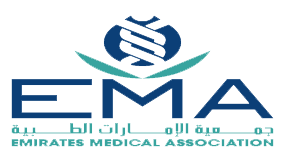How Is Lipo Laser Done?
What Is Laser Lipolysis?
Laser lipolysis, commonly known as lipo laser, is a minimally invasive cosmetic procedure designed to remove excess fat from specific areas of the body. Unlike traditional liposuction, which involves physically removing fat cells through suction, laser lipolysis uses laser energy to break down fat cells, which are then naturally eliminated by the body’s lymphatic system.
- Minimally invasive procedure
- Uses laser energy to break down fat cells
- Fat cells are naturally eliminated by the body
How It Differs from Traditional Liposuction
Traditional liposuction involves making incisions and using a cannula to physically remove fat cells. In contrast, laser lipolysis uses laser energy to liquefy fat cells, making it less invasive and reducing recovery time. Additionally, laser lipolysis can tighten the skin, which is an added benefit not typically seen with traditional liposuction.
- Less invasive than traditional liposuction
- Reduces recovery time
- Can tighten the skin
How Does Laser Lipolysis Work?
Mechanism of Action
Laser lipolysis works by emitting laser energy through a small fiber inserted into the targeted area. The laser energy heats the fat cells, causing them to break down. The liquefied fat is then naturally processed and eliminated by the body’s lymphatic system.
- Emits laser energy through a small fiber
- Heats and breaks down fat cells
- Fat is naturally eliminated by the body
Target Areas for Treatment
Laser lipolysis is versatile and can be used to treat various areas of the body, including the abdomen, thighs, arms, and chin. It is particularly effective for small to moderate amounts of fat that are resistant to diet and exercise.
- Abdomen
- Thighs
- Arms
- Chin
Is Laser Lipolysis Safe?
Safety Measures and Protocols
Laser lipolysis is considered safe when performed by a qualified healthcare provider. Safety measures include using FDA-approved devices, following strict sterilization protocols, and monitoring the patient throughout the procedure.
Book A Consultation With Dr Shehzadi Tasneem
Top-rated Plastic Surgeon For Liposuction in Dubai
Installment Plan Available
- Performed by qualified healthcare providers
- Uses FDA-approved devices
- Strict sterilization protocols
FDA Approval and Clinical Studies
Laser lipolysis devices are FDA-approved, ensuring they meet stringent safety and efficacy standards. Numerous clinical studies have demonstrated the safety and effectiveness of laser lipolysis in reducing localized fat deposits.
- FDA-approved devices
- Numerous clinical studies
- Proven safety and effectiveness
Who Is a Good Candidate for Laser Lipolysis? 
Ideal Candidates
Ideal candidates for laser lipolysis are individuals who are close to their ideal weight but have localized fat deposits that are resistant to diet and exercise. They should be in good overall health and have realistic expectations about the results.
- Close to ideal weight
- Localized fat deposits
- Good overall health
Who Should Avoid Laser Lipolysis?
Individuals who are significantly overweight, pregnant, or have certain medical conditions such as diabetes or heart disease should avoid laser lipolysis. It is essential to consult with a healthcare provider to determine if you are a suitable candidate.
- Significantly overweight
- Pregnant
- Certain medical conditions
How Many Sessions of Laser Lipolysis Are Needed?
Typical Treatment Plan
The number of laser lipolysis sessions needed varies depending on the individual’s goals and the amount of fat to be removed. Typically, patients require 1-3 sessions to achieve their desired results.
- Varies by individual goals
- Typically 1-3 sessions
- Depends on the amount of fat
Factors Influencing the Number of Sessions
Factors such as the size of the treatment area, the amount of fat, and the patient’s response to the treatment can influence the number of sessions required. A consultation with a healthcare provider can help determine the appropriate treatment plan.
- Size of the treatment area
- Amount of fat
- Patient’s response to treatment
Procedure Details 
How Should I Prepare for Laser Lipolysis?
Pre-Treatment Guidelines
Before undergoing laser lipolysis, patients should follow specific pre-treatment guidelines, such as avoiding alcohol and smoking, staying hydrated, and informing the healthcare provider of any medications or supplements they are taking.
- Avoid alcohol and smoking
- Stay hydrated
- Inform provider of medications
Necessary Precautions
Patients should also take necessary precautions, such as arranging for someone to drive them home after the procedure and wearing loose, comfortable clothing on the day of the treatment.
- Arrange for transportation
- Wear loose, comfortable clothing
- Follow provider’s instructions
What Happens During Laser Lipolysis Treatment?
Step-by-Step Procedure
During the laser lipolysis treatment, the healthcare provider will first mark the targeted areas and apply a local anesthetic. A small incision is made, and a laser fiber is inserted to deliver laser energy to the fat cells. The procedure typically takes 1-2 hours, depending on the size of the treatment area.
- Mark targeted areas
- Apply local anesthetic
- Insert laser fiber
Duration of the Treatment
The duration of the laser lipolysis treatment varies based on the size of the treatment area and the amount of fat to be removed. On average, the procedure takes about 1-2 hours.
- Varies by treatment area size
- Typically 1-2 hours
- Depends on the amount of fat
What Happens After Laser Lipolysis Treatment?
Immediate Post-Treatment Care
After the laser lipolysis treatment, patients may experience mild swelling, bruising, and discomfort. It is essential to follow the healthcare provider’s post-treatment care instructions, which may include wearing compression garments and avoiding strenuous activities.
- Mild swelling and bruising
- Follow post-treatment care instructions
- Wear compression garments
Long-Term Care and Maintenance
Long-term care and maintenance involve maintaining a healthy lifestyle, including a balanced diet and regular exercise, to ensure the results of the laser lipolysis are long-lasting.
- Maintain a healthy lifestyle
- Balanced diet
- Regular exercise
Benefits
What Are the Benefits of Laser Lipolysis?
Advantages Over Traditional Methods
Laser lipolysis offers several advantages over traditional liposuction, including being less invasive, having a shorter recovery time, and providing skin-tightening benefits. Additionally, it is a targeted treatment, allowing for precise fat removal.
- Less invasive
- Shorter recovery time
- Skin-tightening benefits
Expected Results
Patients can expect to see a reduction in localized fat deposits and improved body contours. Results are typically visible within a few weeks, with full results appearing after a few months. Liposuction recovery progression After liposuction patients usually feel sore for a few days then gradually return to normal activities over several weeks as swelling goes down and the body heals Cosmetic fat transfer moves fat from one part of your body to another to make you look better
Armpit fat reduction helps get rid of extra fat under your arms Exercise and a healthy diet can help with armpit fat reduction Lipo foam washability means you can clean Lipo foam easily You can wash Lipo foam many times without damaging it
Minimally invasive liposuction is a way to remove fat from the body using tiny cuts and special tools It helps people get rid of stubborn fat without big scars or long recovery times Cost-effective fat removal Eat healthy foods and exercise regularly to lose extra fat without spending much money This is a simple way for
Precision fat removal helps get rid of extra fat in specific body areas It uses special tools to target and remove unwanted fat without surgery
- Reduction in localized fat
- Improved body contours
- Visible results within weeks
Recovery and Outlook 
What Is the Recovery Time?
Typical Recovery Period
The typical recovery period for laser lipolysis is relatively short, with most patients returning to normal activities within a few days. Full recovery and final results can take a few weeks to a few months.
- Short recovery period
- Return to normal activities in days
- Full recovery in weeks to months
Tips for Faster Recovery
To ensure a faster recovery, patients should follow their healthcare provider’s instructions, stay hydrated, and avoid strenuous activities until fully healed.
- Follow provider’s instructions
- Stay hydrated
- Avoid strenuous activities
When Can I Go Back to Work and Other Activities?
Resuming Daily Activities
Most patients can return to work and other daily activities within a few days after the procedure. However, it is essential to listen to your body and avoid overexertion.
- Return to work in a few days
- Listen to your body
- Avoid overexertion
Exercise and Physical Activity Guidelines
Patients should avoid strenuous exercise for at least two weeks after the procedure. Light activities such as walking are encouraged to promote circulation and aid in recovery.
- Avoid strenuous exercise for two weeks
- Light activities encouraged
- Promote circulation
FAQs
How Is Lipo Laser Done?
Laser lipolysis is done by inserting a small laser fiber into the targeted area to emit laser energy that breaks down fat cells. The procedure typically takes 1-2 hours, depending on the size of the treatment area.
Is Laser Lipolysis Permanent?
The results of laser lipolysis can be long-lasting if the patient maintains a healthy lifestyle. However, significant weight gain can affect the durability of the results.
When Should I See My Healthcare Provider?
You should see your healthcare provider if you experience any signs of complications, such as severe pain, infection, or unusual swelling. Routine follow-up visits are also essential to monitor your progress.
How Much Does Laser Lipolysis Cost?
The cost of laser lipolysis varies depending on factors such as the size of the treatment area and the number of sessions required. Insurance typically does not cover cosmetic procedures, but financing options may be available.
How Does Laser Lipolysis Compare to CoolSculpting?
Laser lipolysis and CoolSculpting are both non-invasive fat reduction methods, but they use different technologies. Laser lipolysis uses laser energy to break down fat cells, while CoolSculpting uses controlled cooling. Each method has its pros and cons, and the best choice depends on the patient’s specific needs and goals.












